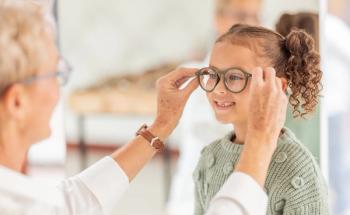
EyeCon 2024: Myopia interventions across the lifespan
Adam S. Wenick, MD, PhD, discussed myopia interventions across the lifespan at EyeCon 2024, covering treatments, complications, and prevention strategies.
Adam S. Wenick, MD, PhD, discussed myopia interventions across the lifespan at EyeCon 2024, covering treatments, complications, and prevention strategies. He presented alongside Magdalena Stec, OD, FAAO. Wenick shares some of the session highlights in this interview.
Video Transcript
Sheryl Stevenson:
We are joined today by Dr Adam Wenick, who is among the faculty at this year's EyeCon conference being held in Fort Lauderdale, Florida, on September 27th and 28th Welcome to you. We're really excited to learn more about your presentation. I know you're going to be talking a little bit about myopia and interventions across the lifespan. What can you tell us about your talk?
Adam S. Wenick, MD, PhD:
Thank you for having me. Myopia really is a growing health problem, both in the United States and across the world. Some studies have been projecting myopia into the future, and by 2050 it's expected that 5 billion people would be affected by myopia with nearly 1 billion affected by high myopia, meaning more than 6 or more diopters. I'm doing this session with Dr. Magdalena Stec, who will be talking about treatment of myopia, as well as some exciting new treatments that may actually slow the progression of myopia. And then, as a retina specialist...we're doing this as a case-based presentation, with a back and forth between the two of us for the whole thing. So I think it'll be a great format for everyone. I'll then be talking about the complications of myopia that we begin to see happen even in children but become more pronounced in adulthood. This includes myopic macular schisis, macular holes, retinal detachments, myopic choroidal neovascularization, as well as development of atrophy related to myopia.
Stevenson:
How do you feel the approach of clinicians towards myopia has changed during recent decades? As you mentioned, looking at it from the different points of a person's lifespan, how has that approach changed over the years?
Wenick:
I think more recently, and Dr. Stec will touch on this more, are the potential treatments to actually slow progression. I think the other thing we need to worry about more now is that there is good evidence that children doing work at close helps drive the progression of myopia. So all of the devices that we're now glued to most of the time in children are definitely a problem. So I think there's more emphasis these days on not just brain development, but prevention in myopia for getting children outside and playing like we used to do when I was a kid. In terms of treating patients once these complications have developed...we prior to 15 years ago didn't have these wonderful anti-VEGF agents to treat myopic CNV and our surgical techniques have certainly been refined and progressed over that time as well. So I think we in the clinic approach things in a similar way, but likely get better outcomes now than in the past.
Newsletter
Want more insights like this? Subscribe to Optometry Times and get clinical pearls and practice tips delivered straight to your inbox.




















































.png)


